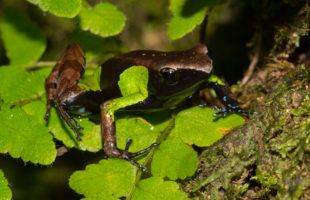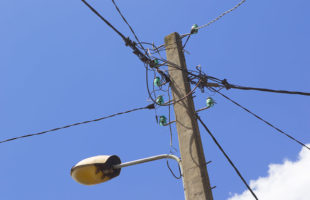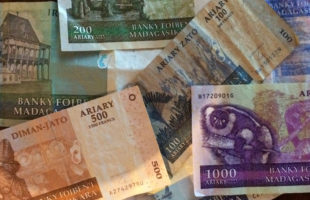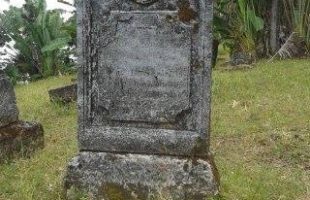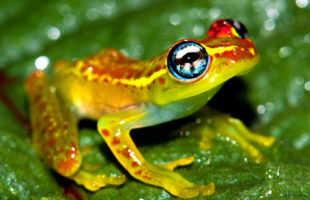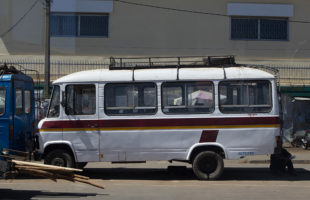What would Madagascar be without its giant landmarks, the mighty baobabs? Over here, they might be known as monkey bread, and have been famous as photo motives and in literatures for centuries. These huge trees, whose roots seems to grow into the sky, enchant everyone, and many baobabs are told to possess magic power. Madagascar has not less than seven …
LesenMasika sipa
Guibé’s mantella
You think poison dart frogs exist only at the Amazon? You are miles out! Madagascar has amphibians very similar to those, the Mantellas or coloured frogs. Like poison dart frogs, Mantella frogs produce a poison secreted via their skin, but it is completely harmless for human beings. Genetically, the Madagascan Mantellas are not related to poison dart frogs. Mantella frogs …
LesenPower & electrictiy
The electricity grid in Madagascar is poorly developed. Only larger cities have electricity connections. The major suppliers are JIRAMA, HydElec, HFF (Henri Fraise fils & Cie) and QMM (Rio Tinto QMM), the latter two being only available in Antananarivo and Tolagnaro (Fort Daupin). There are also smaller suppliers that operate small waterworks or individual solar panels, for example. JIRAMA is …
LesenCurrency and exchange
Currency Since 2002 you pay in Madagascar in Ariary (MGA) and no longer in Franc Malgache (FMG). Similar to how a few people in Germany still convert to Deutsche Mark, some Madagascans still write FMG on their price boards – the conversion works as follows: 5 FMG = 1 MGA. If a price on the street seems unrealistically high, it …
LesenPirates’ cemetery St. Pierre
Legend tells that there was the famous pirates‘ republic of Libertalia at Madagascar’s eastcoast in 17th and 18th century, more precise at Nosy Boraha (St. Marie). Fallen over and skew, century old tombstones at the forlorn cemetery St. Pierre, near the biggest city oft he island, Ambodifotatra, bear witness at least to an adventurous time at the Malagasy island. Famous …
LesenMitsinjo reserve
Mitsinjo: Mitsinjo means as much as “looking ahead” or “planning the future”. Location: The reserve is located close to the village Andasibe in eastern Madagascar, around 140 km away from the capital Antananarivo, in the region Alaotra-Mangoro. You drive approximately four hours on RN2, which is not in the best condition, and then change direction at a well-signed junction. Information …
LesenAgainst the tide: A climbing Mantella
Actually, Madagascan Mantellae all look very similar: Striking colours, small and slender, terrestrial frogs. But one steps out the line: The climbing Mantella (Mantella laevigata). This Mantella was described in 1913 by British zoologists Paul Ashleyford Methuen and John Hewitt, who did a seven months lasting expedition to Madagascar two years ago. The climbing Mantella grows up to maximally 29 …
LesenTaxi Be
The counterpart to the bush taxis or Taxibrousse in Madagascar is the so-called taxi be. In English, this simply means “big taxi”. They run exclusively in the city traffic of larger cities or between suburbs and do not undertake cross-country trips. You can easily recognize them by the colorful stripes around the minibus and the large numbers behind the windscreen. …
LesenThe carnivore among plants
Carnivorous plants in Madagascar? Yes, there are! Two species of pitcher plants (Nepenthes madagascariensis and Nepenthes masoalensis) solely exist on the big island. You can find them in open, sunny areas on humid sandy soil along Madagascar’s east coast. In northern direction, they occur until Antongil bay and in southern direction until Tolagnaro (French Fort Dauphin). Mostly, large populations are …
LesenPierrot Men and his photographic studio
Pierrot Men is a household name in Madagascar: he has been the most famous photographer on the island for over 40 years. Above all, the many black and white photographs from the lives of his compatriots remain in his memory and touch people all over the world. Pierrot was born in 1954 as Chan Hong Men Pierrot in Midongy du …
Lesen MADAMAGAZINE Your Magazine about Madagascar
MADAMAGAZINE Your Magazine about Madagascar


